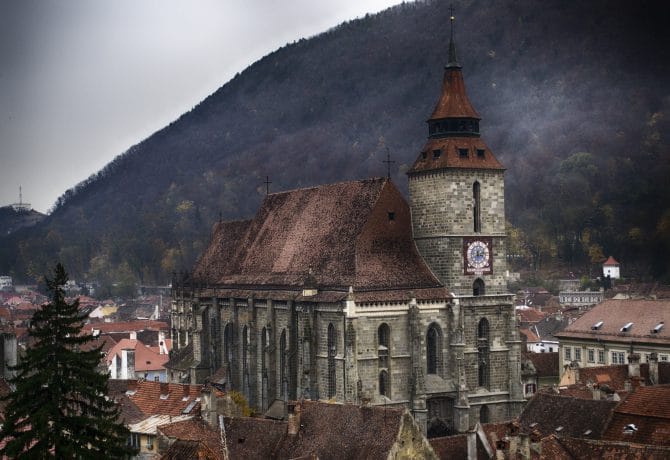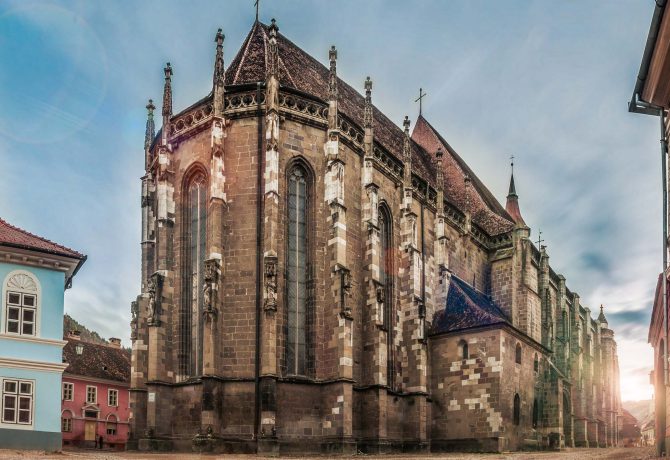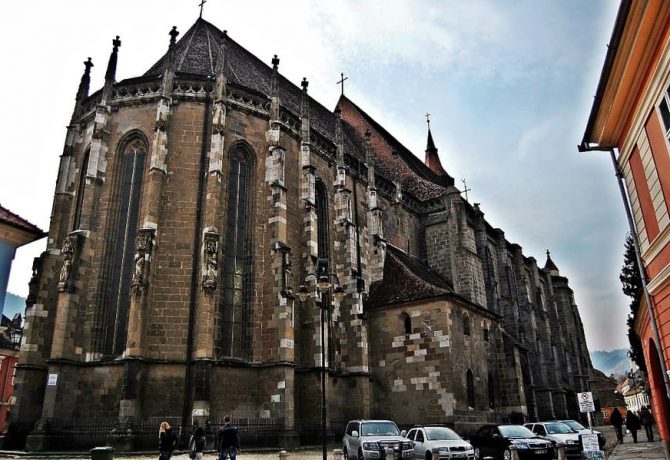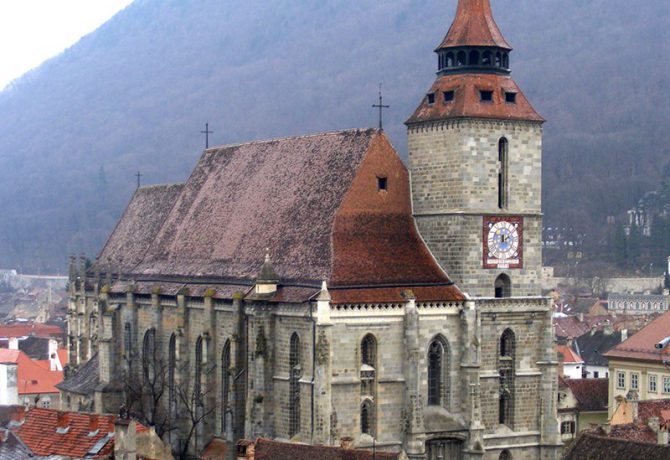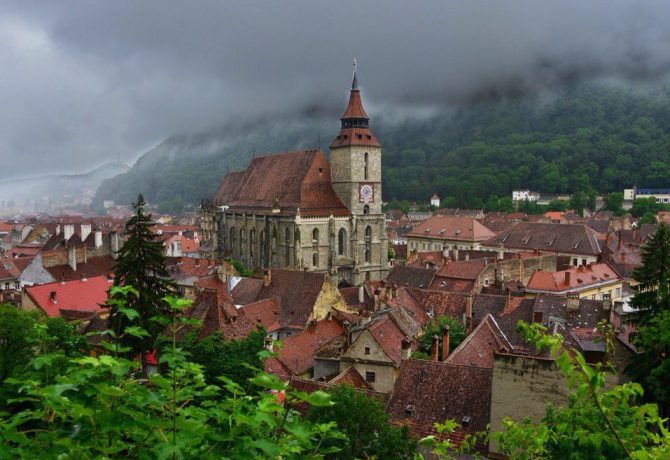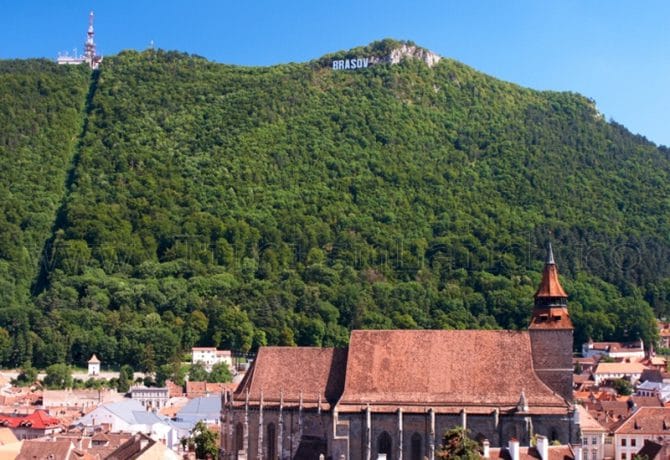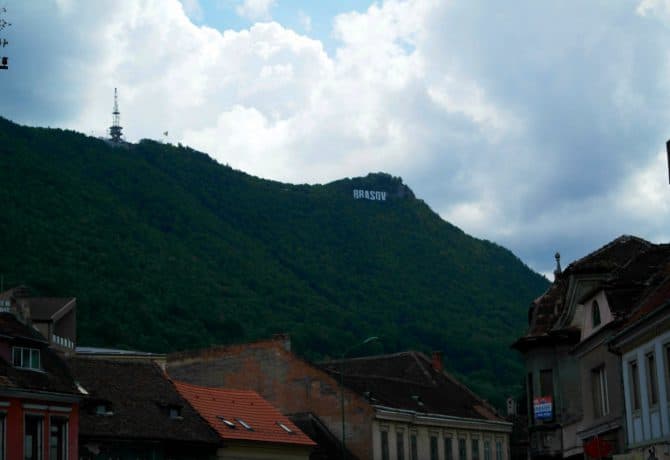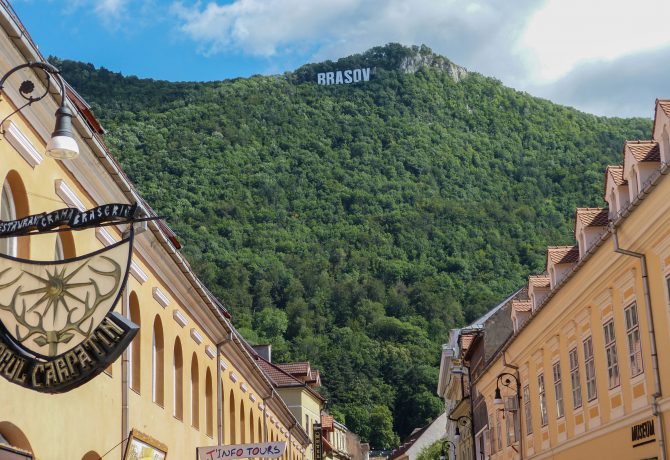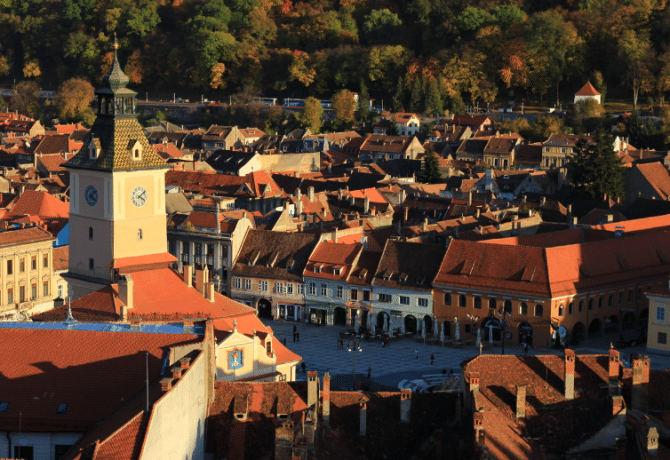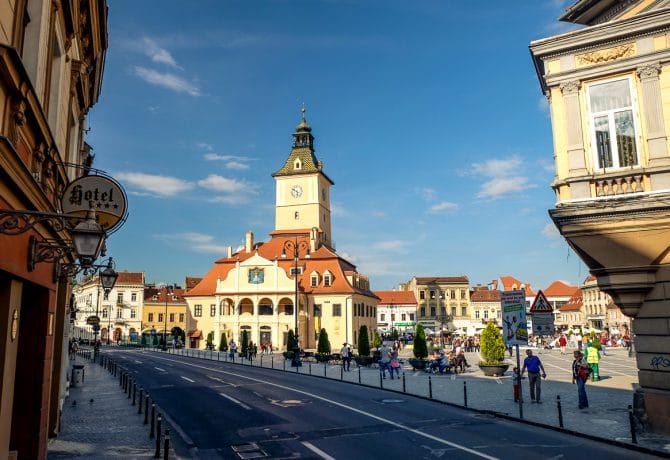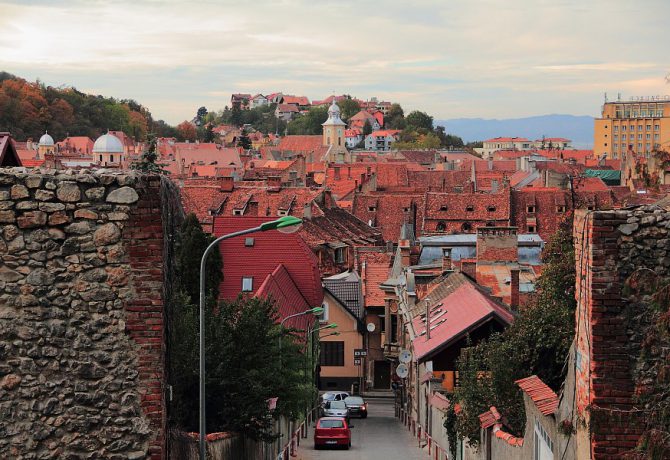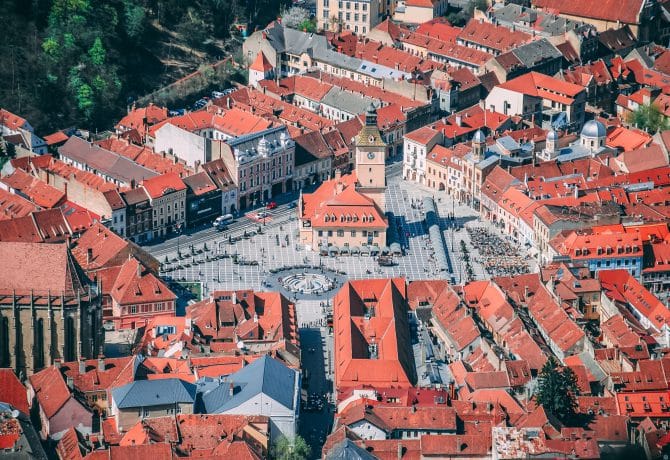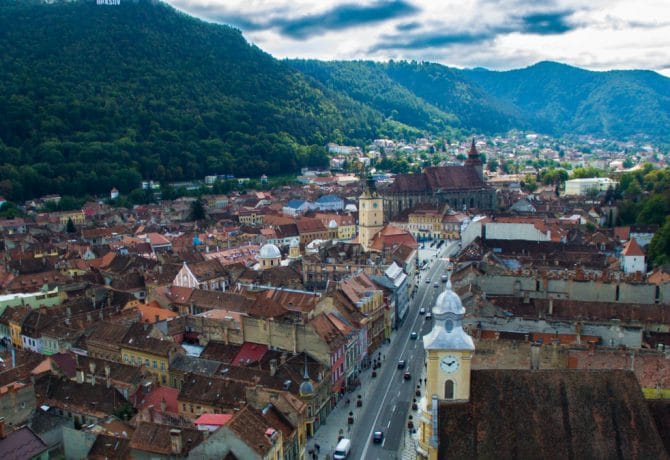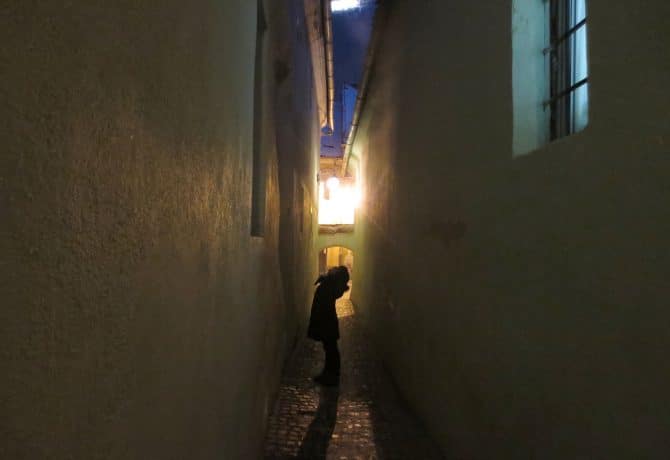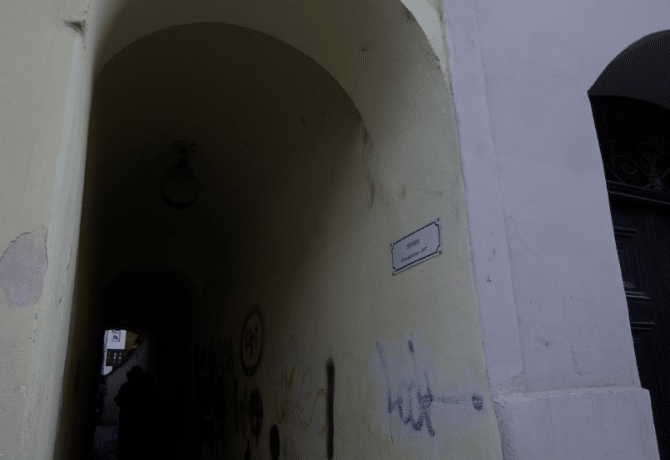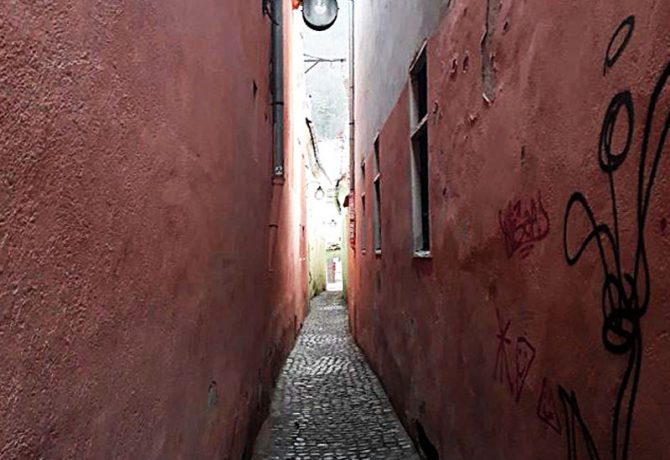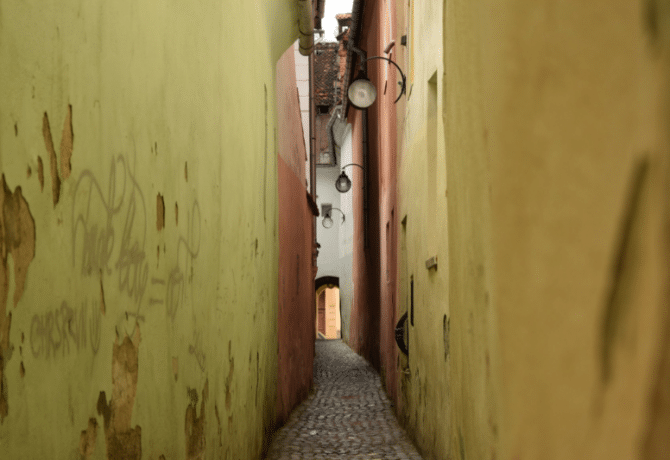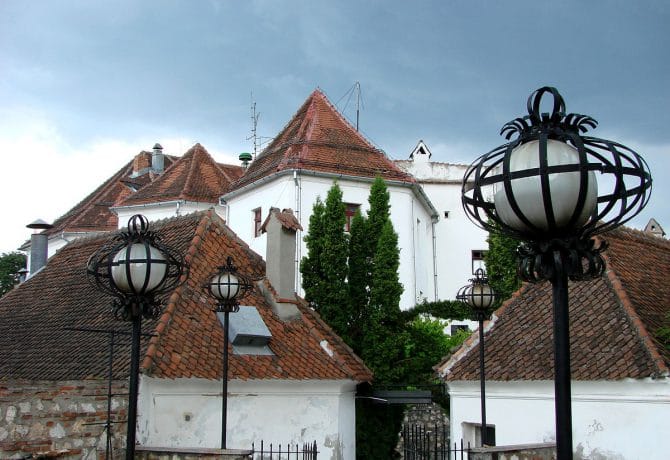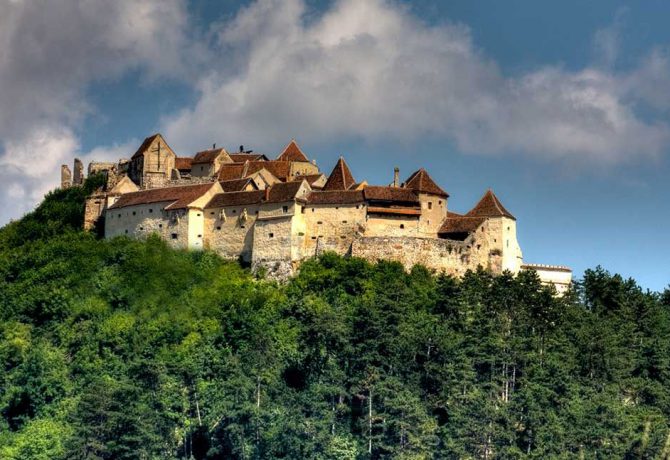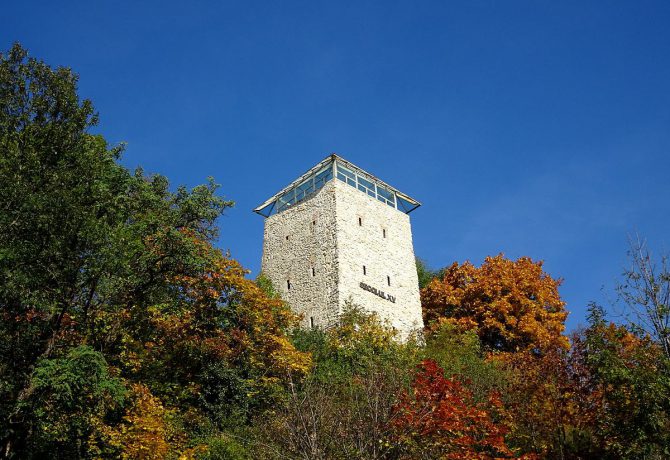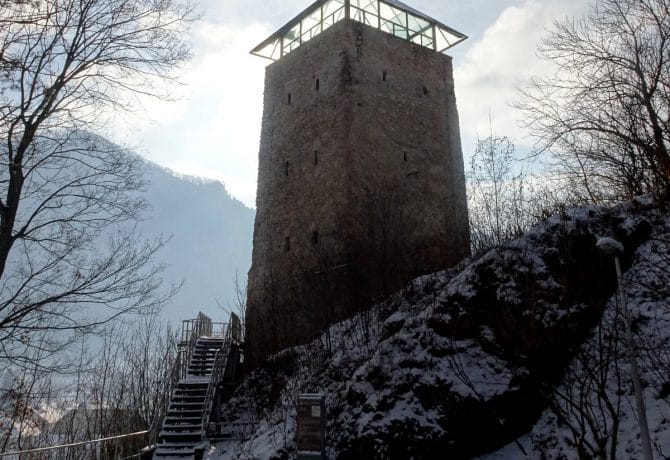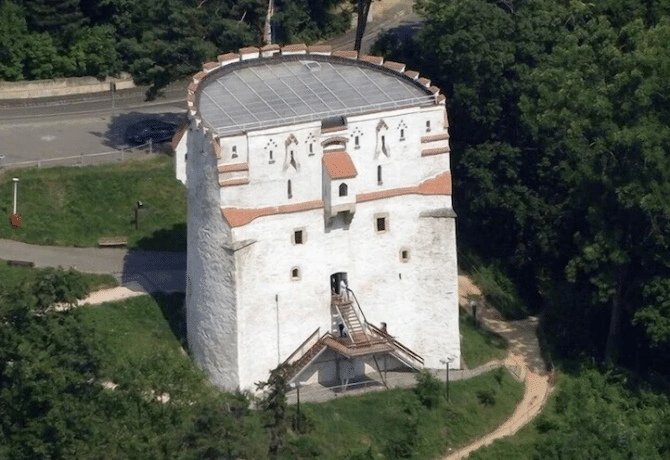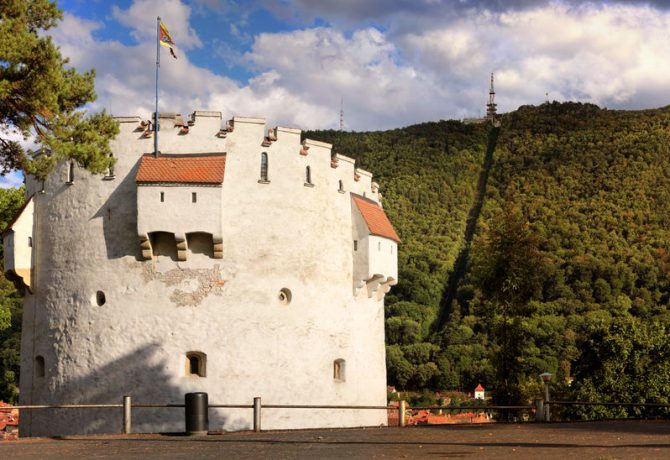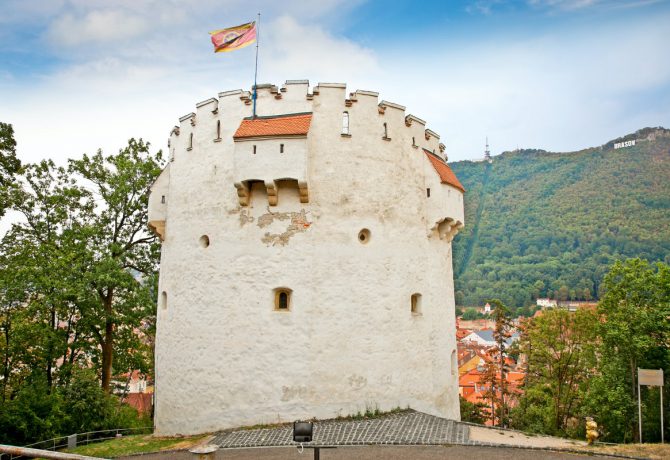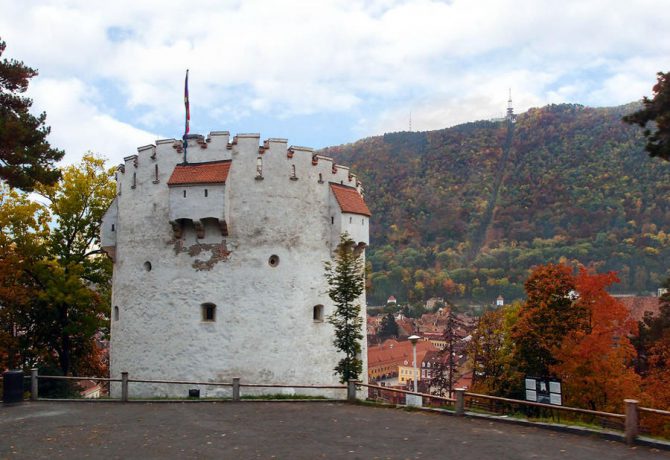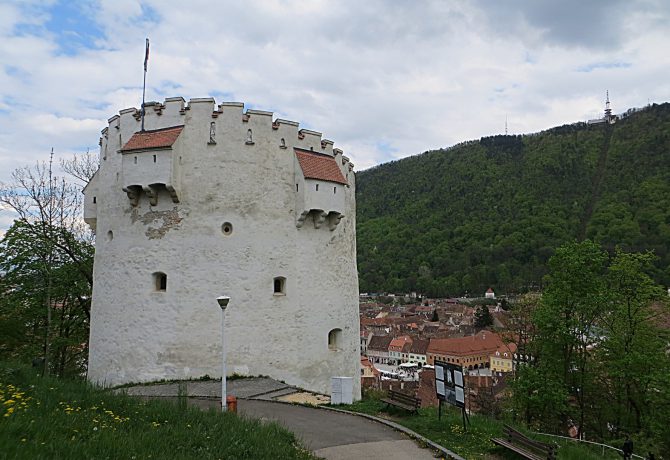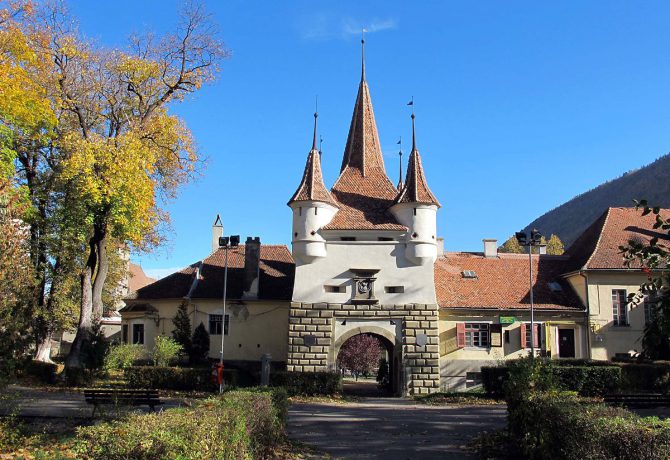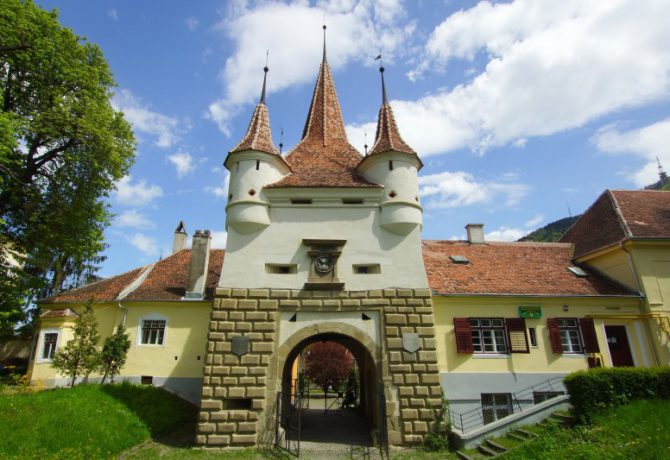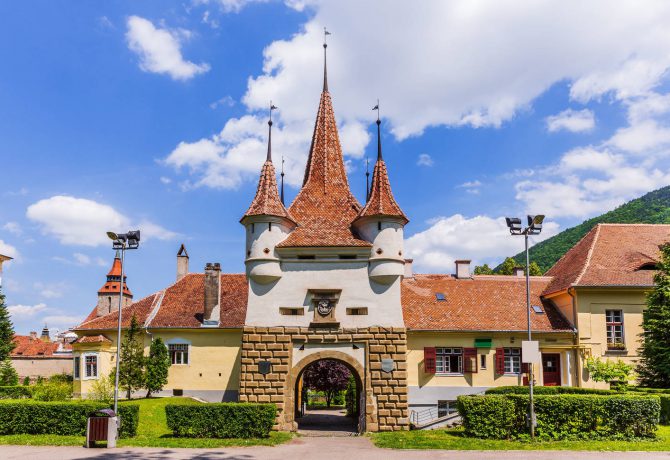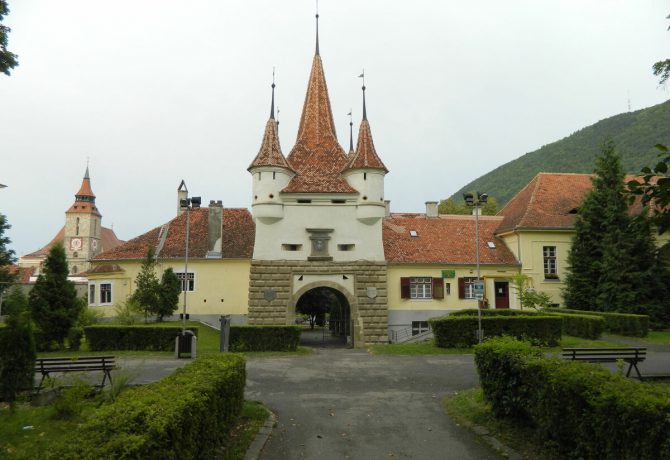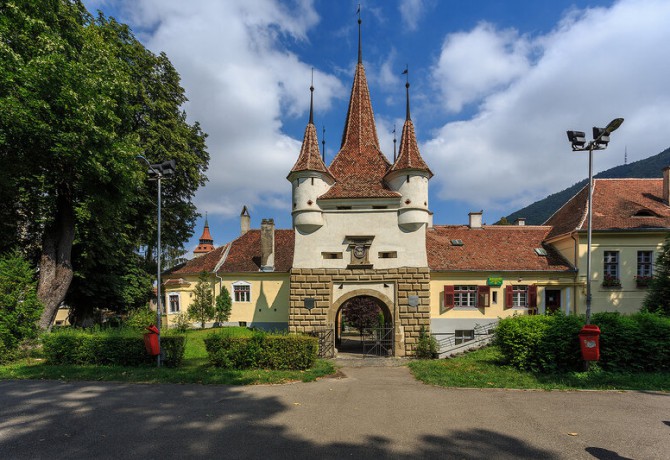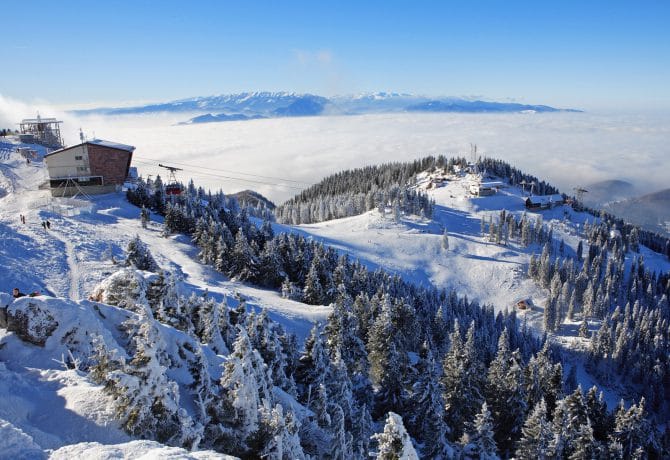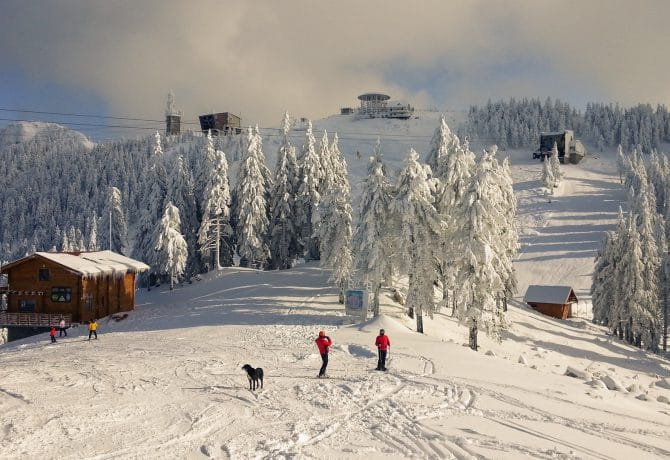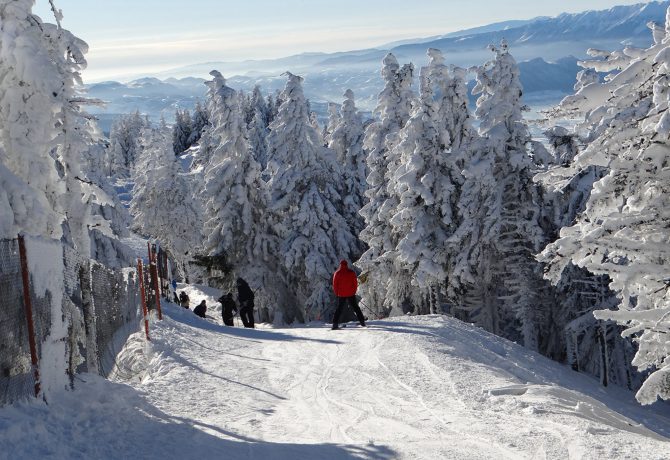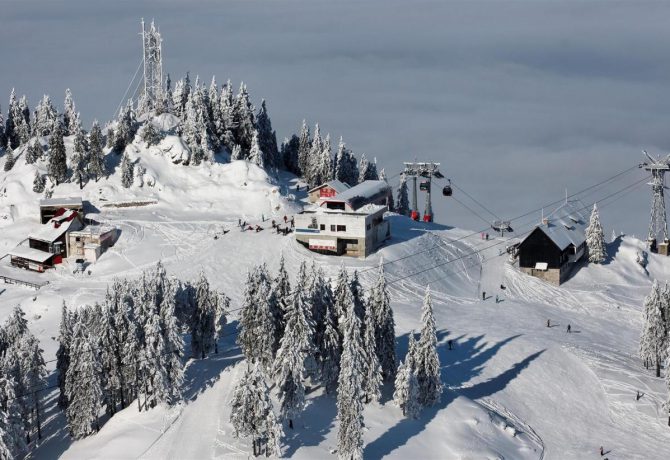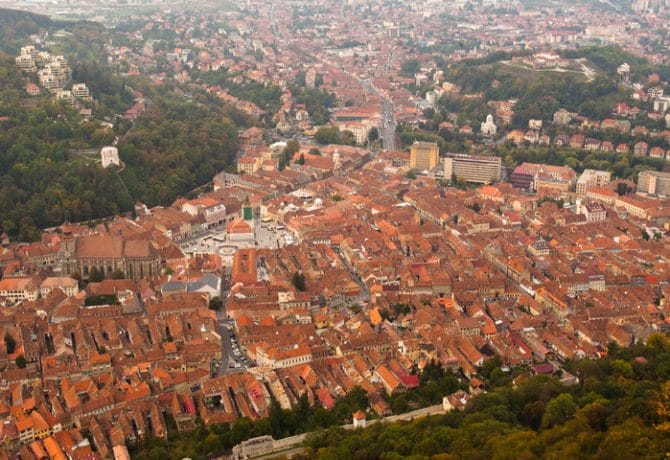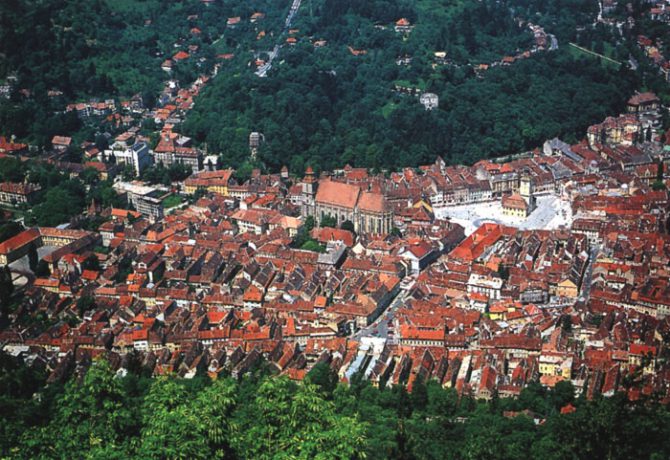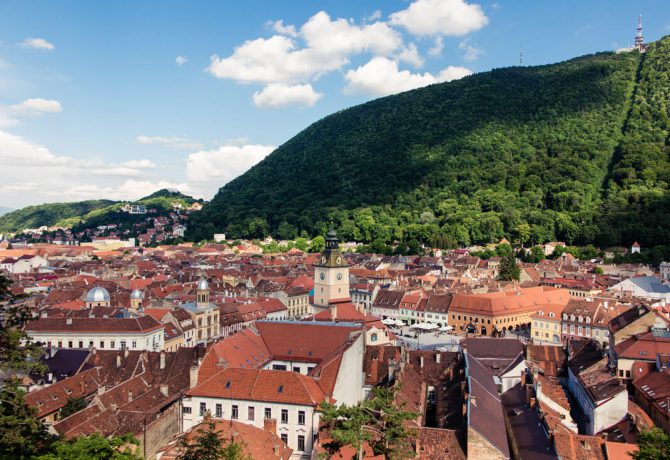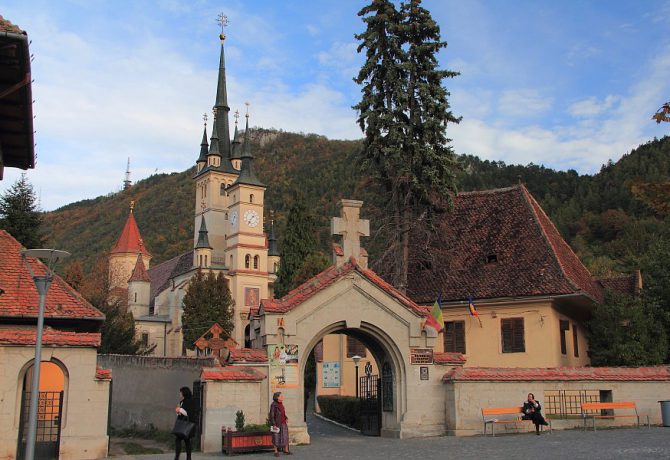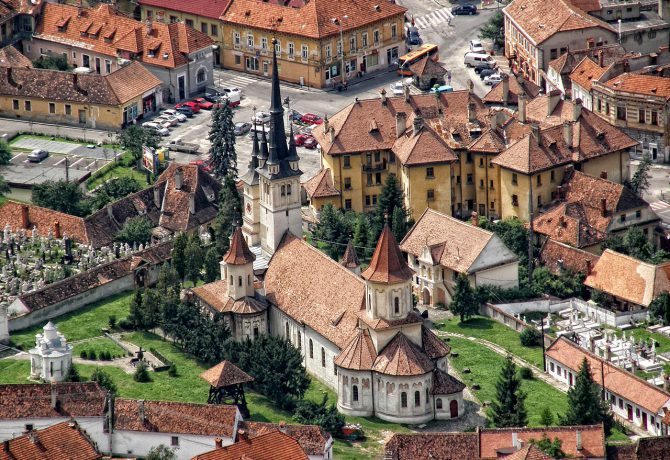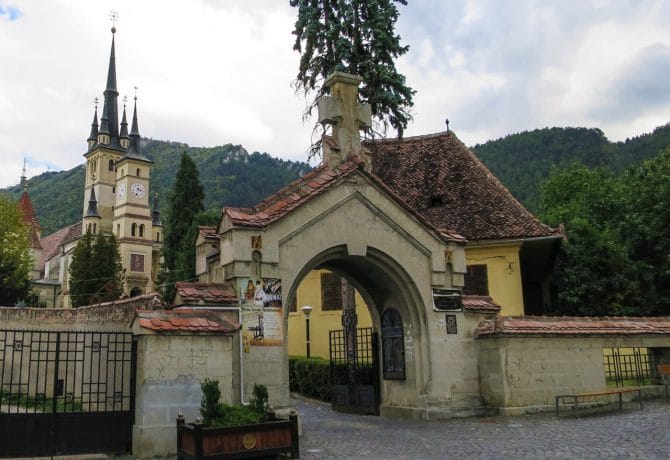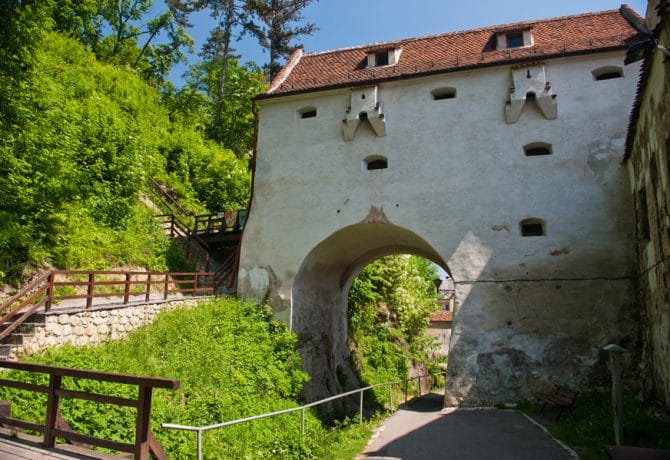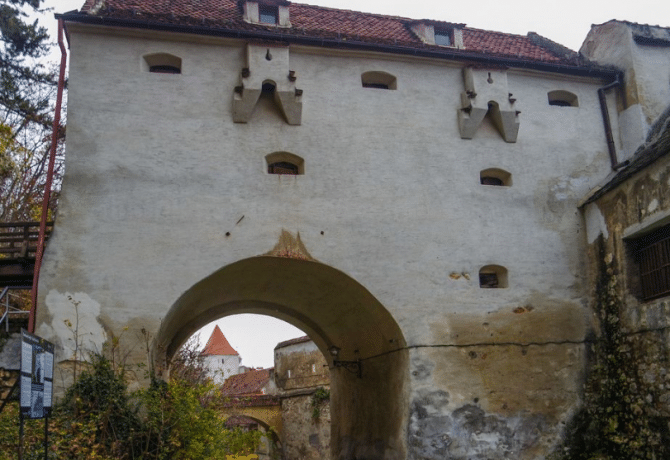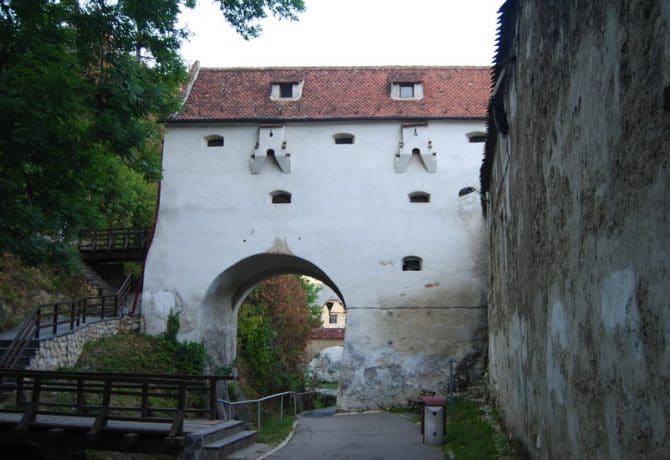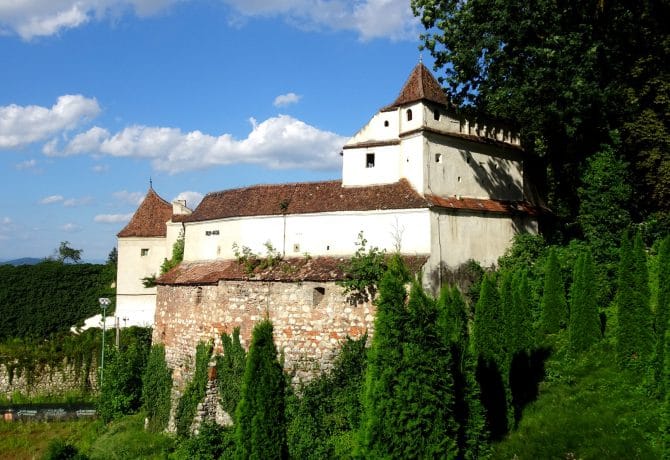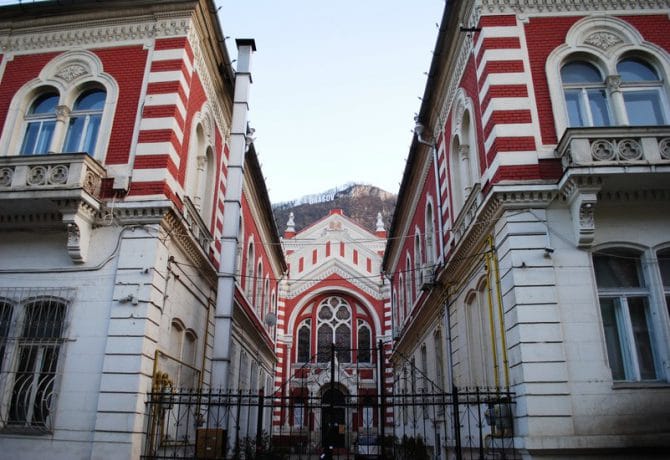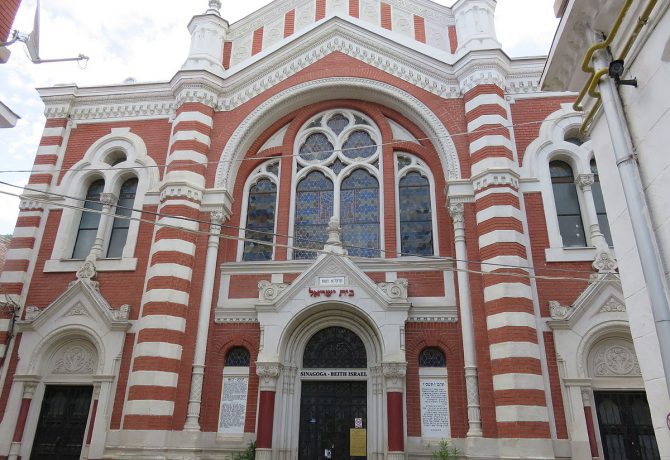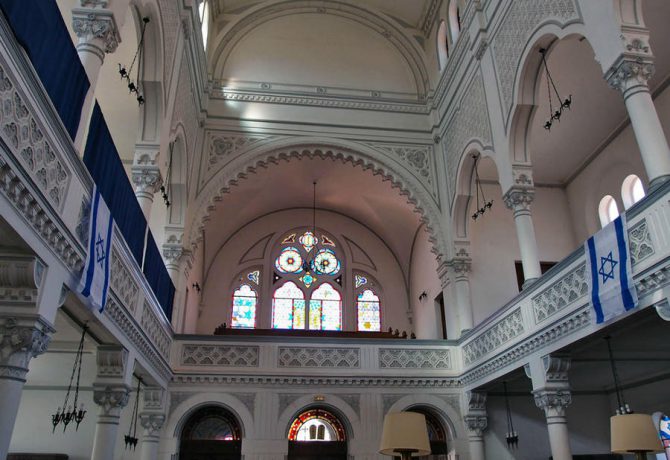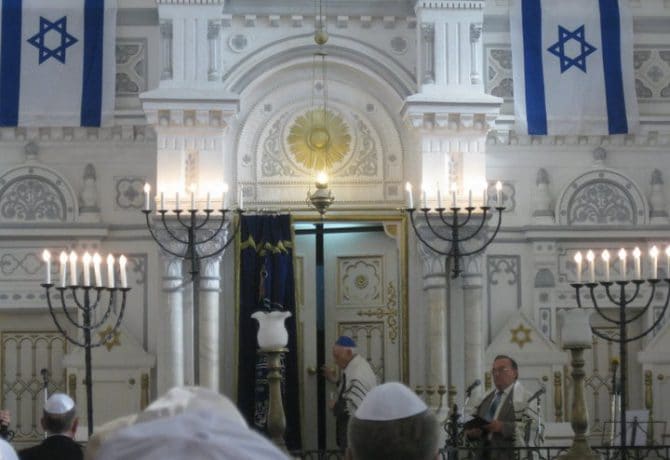Don’t know what to see in Brasov? As one of the most important Saxon settlements in Transylvania in medieval times, Brasov is full of historical monuments, charming streets and has more history than you can imagine.
Its strategic location made it a link between the Ottoman Empire and Western Europe, making Brasov one of the most fortified citadels in Transylvania at the time.
With such a complex history and such beautiful architecture, exploring Brasov to the fullest can be challenging.
Black Church
The Black Church is one of the best attractions in Brasov. This impressive monument in the Gothic style is 89 meters long, 38 meters wide and 65 meters high.
Many of you may wonder how the Black Church got its name. Churches are usually named after people or saints, but the Black Church is not.
In 1689, a devastating fire engulfed the church. The walls were badly damaged and blackened by smoke. From that day on, it is called the Black Church.
Before being called the Black Church, it was a Roman Catholic church known as St. Mary’s Church. Its construction began at the end of the fourteenth century and took about a century due to the constant attacks of the Ottoman and Tatar armies. Resources were so scarce that a smaller version of the church was built.
Coincidentally, when the church was finished, the Protestant Reformation swept the nation, and the Catholic values of the church were replaced by Lutherans.
The history of this church is impressive, but the most impressive is the treasure it holds. It is home to the country’s largest mechanical organ, a magnificent collection of oriental rugs, and more. The Black Church is a must-see in Brasov.
Mount Tampa
Anyone strolling through the charming old streets of Brasov will inevitably notice a Hollywood-style “Brasov” sign on top of the mountain. This mountain is Mount Tampa, one of the best places in Brasov to enjoy stunning panoramic views.
As part of the famous Carpathians, Mount Tampa rises about 400 meters above the city. The top of the mountain is at an altitude of 960 meters.
There are two ways to get to the top of Mount Tampa: by cable car (gondola lift) or on foot.
The cable car is a great option to get to the top of Mount Tampa if you are traveling to Romania with children or the elderly. The trip costs 4 euros (330 rubles) for a round trip, so it is not expensive at all. Just be aware that the cable car operates from 9:30 to 16:00, weather permitting.
Winter in Brasov can be unpleasant. It is advisable to check with those present what the exact schedule is before boarding the cable car.
Another option for climbing Mount Tampa is hiking. A well-marked 1.5-hour trail will take you through the stunning scenery of the Carpathian Mountain Range. You may even come across some native species of birds and animals, such as the Ural owl or black woodpecker.
Old Town of Brasov
If you visit Brasov, then Brasov’s Old Town is a must-see area.
It is an area with important historic buildings, charming old streets and delicious Romanian cuisine. The Old Town is one of the best places to visit in Brasov.
In the heart of the Old Town is the Council Square. All medieval cities had a large area where trade, executions and other important activities were carried out. Piata Sfatului was this historic square.
Although you won’t find public executions today, you’ll find a beautiful square surrounded by some of the most beautiful buildings in Brasov, as well as plenty of haute cuisine establishments.
The most important building on the square is the former Council House, built in 1420. It is now home to the Brasov County History Museum.
If you’re exploring Brasov without a guide, the Council Square is the perfect place to start. Starting from the square, you will find new attractions in the historic center of Brasov.
Strada Sforius
Strada Soforiy (Rope Street) is the third narrowest street in the world and the narrowest in Eastern Europe. With a total length of 80 meters and a minimum width of 111 cm, visitors can touch both sides of the wall at once.
The street was originally laid out in the fifteenth century for fire brigades. By giving them faster access to the Old City, officials hoped to avoid further disasters.
Today, this street has become one of the main attractions of Brasov.
Citadel of Straya Hill
The citadel is located near the walls of the old town, on a hill, and offers visitors a breathtaking view of the city. The citadel was one of the most important defensive points of Brasov outside the old town.
The citadel served as a camp, barracks for soldiers and, until recently, a prison. After extensive restoration, it was opened as a tourist site and restaurant.
It is not known whether the Citadel is now open to visitors or not. There is no official website where you can check the opening hours.
It is said to be officially closed, but if you are there at the right time, the guards will allow you to look inside.
Regardless of whether the citadel is open or not, the climb to it is worth it, as the views are really breathtaking.
On one side of the hill you can see the classic European old town, and on the other side you can see the communist influence in Brasov.
You can climb the street or follow one of the paths that wind between the buildings. Be that as it may, you can try your luck with the citadel.
Brasov Black Tower
The Black Tower was one of the first fortification systems installed in the medieval citadel of Brasov. Unlike what the name implies, the Black Tower is not exactly black. In fact, it’s white.
The Black Tower was built in the fifteenth century to stop any attack coming from the west side of the city. In 1559, lightning struck the outside of the fortress, and it turned black. From that day on, it was called black.
Restoration work was carried out on the old fortification.
The 4-storey Black Tower also has an impressive glass roof from which visitors can get a stunning view of Brasov’s Old Town from The Warthe Hill. It is also the perfect place to admire the Black Church, one of Brasov’s main tourist attractions.
The Black Tower is open intermittently, be sure to check this before visiting. It is one step away from the Council Square.
White Tower of Brasov
Along with the Rear Tower, the White Tower was also one of the first fortification systems installed in Brasov.
The semicircular tower with a height of 20 meters was built in 1494 on a rock and got its name from the white facade. The impressive structure has a 4-meter wall near the base, as well as five matakanas (a hole through which objects such as stones or burning liquids can be thrown to attackers).
In medieval times, guilds of tinsmiths and boilermakers were responsible for the maintenance of the White Tower.
Unfortunately, the tower was badly damaged by fire in 1689, but was renovated in 1723. Recently renovated in 2006, the White Tower now presents temporary exhibitions offered by the Brasov County History Museum.
Visitors can reach the White Tower via a 250-meter staircase from the bastion graft. In addition, visitors can also walk through the forest from the Black Tower.
Like the Black Tower, the White Tower is not always open. Be sure to find out if it is open.
Catherine’s Gate
The medieval Gate of Catherine looks as if from a fairy tale and is the only door preserved from medieval times. They were built in 1559, after the old gate was destroyed by a flood in 1526. They got their name from the monastery of Santa Catalina, which was then located next to it.
Catherine’s Gate was the only gateway to the citadel for romanians. During Saxon rule from the thirteenth to the seventeenth century, Romanians were not allowed to own property within the fortified city, so they settled outside the city in the area.
Romanians were only allowed to enter the citadel at certain times, and they could only do so by paying a fee at the Catherine Gate.
Today it is one of the most amazing things to see in Brasov.
Polyana Brasov
If you visit Brasov in winter, the popular ski resort of Polana Brasov is a place not to be missed.
Travelers from all over the world come to ski on the pristine slopes of the Brasov Glade, also known as the Alps of Romania. Although skiing is not uncommon in Europe, many places are expensive. The Brasov glade is not only budget-friendly, but its tracks are among the best in Europe.
In Polyana Brasov you can ski from the end of November to the end of February.
If you visit the city in other seasons, you will not be able to enjoy the winter sports that Polyana Brasov is known for. However, there are many natural trails in the area, ideal for hiking, cycling or even horse riding.
The nature of The Brasov Glade is breathtaking, and outdoor enthusiasts will find a piece of paradise in this place.
Surprisingly, in Polyana Brasov you can taste some of the best traditional Romanian products that you can find. Dishes vary depending on the season because local ingredients are often used.
Sarmale (Romanian cabbage roll) and mamaliga (Romanian polenta) are some of the most popular traditional Romanian dishes.
Shay District
Travelers visiting Brasov often overlook the Prund Shei district, an ethnic Bulgarian and Romanian area.
Walking around the neighborhood, which looks like a village, you will notice that this small area contrasts sharply with the historic center of Brasov. Most of the buildings are quite simple compared to the old town.
In medieval times, Romanians and Bulgarians were forced to live in the Shay area by the Saxons, as they were the only ones who could live within fortified walls.
There are two historical sites in the Shay district that you should visit: the Museum of the First Romanian School and the Church of St. Nicholas.
The Museum of the First Romanian School is an impressive museum that features interesting exhibits such as the oldest letter written in the Romanian alphabet, the first Romanian Bible, and the first Romanian printing press.
Next to the museum of the First Romanian School is the beautiful Romanian Orthodox Church of St. Nicholas, an impressive landmark in the Shay district. The church actually consists of 4 small churches inside.
Visiting the Shay district is one of the unusual things to do in Brasov. In addition, it is not too far from the historic center of Brasov.
Church of St. Nicholas
This beautiful church is located in Shea, outside the fortified old town. In 1495, the construction of the current church began.
This Orthodox church (and the nearby Romanian school) became a place of great spiritual and cultural importance for Romanians.
The 1495 version of the church was originally built in the Gothic style, but changes made in the eighteenth century gave it its current Baroque appearance.
Bastion Tezatorilor
Bastionul Tecatorilor resembles medieval Brasov. It is located at the foot of Tampa Hill, in the southwest corner of the fortified Old Town. It is considered one of the best preserved defensive structures of medieval Brasov and was built between 1421 and 1432.
The walls of the bastion are more than 4 meters thick and have the shape of an “inverted keyhole” for archers.
Bet Israel Synagogue
When the first Jewish families settled in Brasov in the early nineteenth century, they needed a place to pray. The synagogue became that place.
The synagogue was built between 1899 and 1901 in the neo-Gothic style with Moorish features.
When is the best time to travel to Brasov?
The best time to visit Brasov depends on the type of trip you are looking for.
During the winter months, It is usually very cold in Brasov and there are heavy snowfalls. This makes it an ideal time to explore the Brasov Glade, a place known for its winter sports. If you visit it during Christmas time, the Brasov Christmas Market is an event that will make you happy.
Summer is the time when most tourists come to Brasov. The atmosphere of the city is pleasant and with lots of entertainment. The warm Romanian summer attracts foreign and local tourists. However, the influx of tourists leads to higher prices. Be prepared to pay a little more than usual for accommodation and meals.
Spring and autumn are worthy months to visit Brasov. Tourism during these months is very quiet, so you don’t have to worry about the crowds. Some say the weather can still be too cold, especially if you’re in the mountains. Prices are usually lower in these months, ideal for those visiting Romania on a budget.
How to get to Brasov?
At this time, the nearest airport to Brasov is Sibiu International Airport. However, since Sibiu Airport is small compared to Bucharest Airport (Henri Coandă International Airport), flights to Sibiu are usually more expensive.
If you are travelling on a budget, we recommend flying to Bucharest and then taking the train from Bucharest to Brasov.
Where to stay in Brasov?
JugendStube Hostels
This is a hostel for tourists: affordable, comfortable and with a lively atmosphere. Thanks to the staff who can answer any questions about the sights of Brasov, guests can feel safe while exploring Brasov. The hostel also offers a free basic breakfast, which is the perfect way to start the day in Brasov.
Safrano Palace
Safrano Palace is the perfect hotel in Brasov, with spacious rooms, comfortable beds and modern décor combined with traditional elements. The complimentary breakfast buffet each morning is the ideal base for boosting activity for sightseeing in Brasov.

